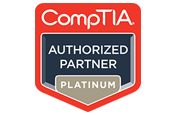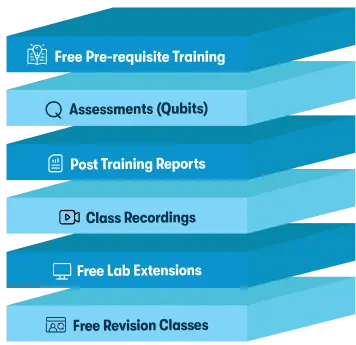We're open through the holidays to support your upskilling goals — Which training do you want to book?
We're open through the holidays to support your upskilling goals — Which training do you want to book?
Unable to find what you're searching for?
We're here to help you find itCompTIA Cybersecurity Analyst (CySA+) Course Overview
The CompTIA Cybersecurity Analyst (CySA+) course provides essential skills for detecting and mitigating cybersecurity threats through advanced incident response and vulnerability management. Participants will gain expertise in system hardening, analyzing network indicators of compromise, and managing tools like SIEM, SOAR, and endpoint detection. This course emphasizes threat intelligence, secure coding practices, and incident reporting, preparing learners for real-world challenges. Through hands-on labs, students will master techniques for security automation, intrusion analysis, and compliance reporting. The CySA+ certification validates critical skills needed for proactive defense, making it ideal for security analysts, threat hunters, and IT professionals seeking to enhance their cybersecurity capabilities with comprehensive CompTIA CySA+ training.
These skills demonstrate your ability to detect threats, respond to incidents, and maintain proactive cybersecurity measures effectively.
Successfully delivered 102 sessions for over 316 professionals
Purchase This Course
USD
View Fees Breakdown
| Course Fee | 2,950 |
| Exam Fee | 450 |
|
Total Fees (without exam) |
2,950 (USD) |
USD
View Fees Breakdown
| Course Fee | 2,250 |
| Exam Fee | 450 |
|
Total Fees (without exam) |
2,250 (USD) |
USD
View Fees Breakdown
| Flexi Video | 16,449 |
| Official E-coursebook | |
| Exam Voucher (optional) | |
| Hands-On-Labs2 | 4,159 |
| + GST 18% | 4,259 |
|
Total Fees (without exam & Labs) |
22,359 (INR) |
|
Total Fees (with Labs) |
28,359 (INR) |
Select Time
Select Date
| Day | Time |
|---|---|
|
to
|
to |
♱ Excluding VAT/GST
You can request classroom training in any city on any date by Requesting More Information
Inclusions in Koenig's Learning Stack may vary as per policies of OEMs
Scroll to view more course dates
You can request classroom training in any city on any date by Requesting More Information
♱ Excluding VAT/GST
*Inclusions in Koenig's Learning Stack may vary as per policies of OEMs
Suggestion submitted successfully.
Koenig Learning Stack
Inclusions in Koenig's Learning Stack may vary as per policies of OEMs



